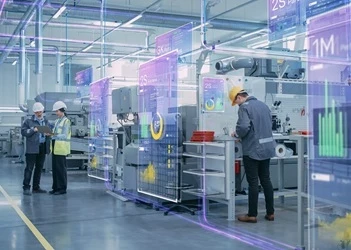VELUX: A clear vision for Big Data & Analytics
Add bookmarkBig data and analytics. It even sounds complex and expensive doesn’t it? Taking on a big data project is a mammoth task, there’s infrastructure and training and strategy to think about – not to mention the data itself!
VELUX are one company who are embracing data and what it can do for them, and they’ve taken a thoughtful approach to rolling out their strategy. Ahead of the Data Analytics Nordics summit in February, PEX Network Editor, Craig Sharp speaks to Anders Reinhardt, Head of Global Business Intelligence at VELUX about their approach.
Craig Sharp: Good morning Anders, thank you for joining us today.
Anders Reinhardt: Good morning Craig, thank you for having me.
Craig Sharp: I think it’d be good for us to start right at the beginning. How did you team go about selling the idea of big data investment within your company? Where did it all start?
Anders Reinhardt: It was a fairly pragmatic approach to be honest. We started I think three or four years ago, working with information, starting with one data store, the next steps have been a lot about trying to establish how we determine performance in the organization. Establishing what to measure, how to measure it and how to convey the results.
Craig Sharp: And what are VELUX currently doing with Big Data?
Ander Reinhardt: We’re doing several things. First of all, for a number of years we’ve been working on getting our reporting platforms ready for big data, in our case we’ve done a lot to try to create a fast reporting solution that can actually crunch quite a lot of data. Second we’ve been working on creating a robust solution that can handle expansion of data – which is something that can be quite cumbersome, we’re working on expanding the number of data sources we’re working with.
We’re not yet connected to data sources that are so huge that they require Hadoop or similar applications to handle the data. We’re very careful about how much organic growth we create in the data because we know that if you get more and more data it expends more and more resources to accelerate it and make it readily available.
Craig Sharp: How about the data sets you currently have? They’re all readily available?
Anders Reinhardt: We are more flexible that the average Danish company. Everything is loaded into memory, so everything is readily available; 12 years of history. We are also applying predictive analytics on top of the platform now, so you could say we’re preparing ourselves to venture into the area of bigger data but we are still fairly immature in many areas.
We don’t have huge departments of analytics crunching the data yet. We still see a huge demand or ordinary, simple reporting which of course we can deliver. But we’re now seeing a massive growth – especially in the area of digital – where marketers want to start working with the data, they want to supply dashboards and other kinds of information that sum up what people are saying on social media, and they’re working with a lot of external data sources.
Within Finance we’re also quite ambitious, we want to start doing more visual data mining on top of our profitability data, and we also want to start experimenting with predictive analytics in relation to finance.
Craig Sharp: You mentioned analytics which leads me into my next question – what are VELUX’s plans for the data? What do you hope to achieve?
Anders Reinhardt: Continuing with the area of finance for a moment for example, it’s our goal to become a more valued partner for local management, and we can only do that if we can assist them with knowledge about the company and the level of detail our analytics can provide. That’s one area we’re very confident we’ll be able to increase profitability in.
One discovery we made recently when we moved beyond budgeting and reformed the way we do planning and forecasting is actually that a lot of the tasks in relation to conveying an analytical result is in the presentation format. It’s actually in understanding who you are addressing and how you’re packaging that. To that end we aim to work with much more visual tools, not just for ourselves but especially for the people who are supposed to consume the results of our analysis.
We also have ambitions within procurement, where we’ve recently made a turnaround and have very ambitious plans for cost savings. We need to construct a whole analytical roadmap for this. This, in general is what I see across the organization – the task we have ahead of us is trying to link our analytical strategies to our core business objectives.
Craig Sharp: What do you believe data and analytics will provide for VELUX in the future? Where is this going?
Anders Reinhardt: First of all we’ll be able to make better decisions, I feel like sometimes in business people are in decision limbo. It happens in our private lives too. We’re all craving more and more information in order to make better informed decisions.
The first step as I mentioned earlier, is for us in the coming years to make that tie-in between our business strategies and how analytics can support those. It starts with an understanding of the business and a clear understanding of the data in order to drive revenue. You need a good analytical understanding of your area and not all the decision makers or the requesters of analytics have that currently.
In VELUX we’re also working much more in a global capacity, so we need to begin sharing more information. Sharing relevant information and making decision on a global scale is not simple. But I still believe if you start with a simple roadmap, you are already light years ahead of those who’re still in a panic because they don’t have a strategy and they feel they’re falling behind.
Anders will be showing audiences how to build a clear big data roadmap at Data Analytics Nordics in February. Download the brochure below for more info.





















